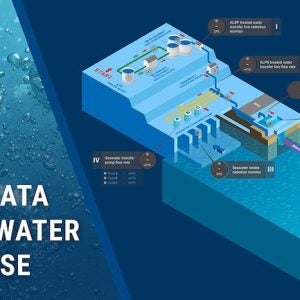 Japan’s The Nuclear Regulation Authority (NRA) on 26 February officially approved the safety of unit 2 at Tohoku Electric Power Company’s Onagawa nuclear plant in Miyagi Prefecture.
Japan’s The Nuclear Regulation Authority (NRA) on 26 February officially approved the safety of unit 2 at Tohoku Electric Power Company’s Onagawa nuclear plant in Miyagi Prefecture.
However, approval from the local authority is still required to restart the 825MWe reactor.
The Onagawa and Ishinomaki municipal governments, which co-host the plant, have not objected, but there have been protests from residents.
A November 2019 draft report approved by NRA to gauge public opinion on the project contained 979 comments. Many citizens expressed concerns over the safety of the plant, but they were dismissed by the NRA.
Tohoku Electric plans to complete safety upgrades at the plant by the end of March 2021. It is expected to return to service later next year.
The March 2011 earthquake and tsunami knocked out four of Onagawa's five external power lines, but the remaining line provided enough power for its three boiling water reactors to be brought to cold shutdown. In addition, the cooling system of Onagawa 2 was damaged but did not fail.
When Tohoku Electric applied to NRA in December 2013 for a review to allow it to restart the reactor, it enhanced the plant's earthquake resistance and began building a 29-metre-high seawall. The measures are expected to cost about JPY340 billion ($3.1 billion).
Onagawa 2 is the 16th reactor in Japan to win approval under NRA's new safety standards. It is the third plant with boiling water reactors (BWRs), to meet the criteria.
Tohoku has already decided to decommission Onagawa 1 and is considering whether to apply to restart Onagawa 3.
Photo: Onagawa Nuclear Power Plan taken by Nekosuki600(talk / Contributions) in November 16th 2003 and uploaded by Nekosuki600(talk / Contributions) to Japanese Wikipedia in September 25th 2005






